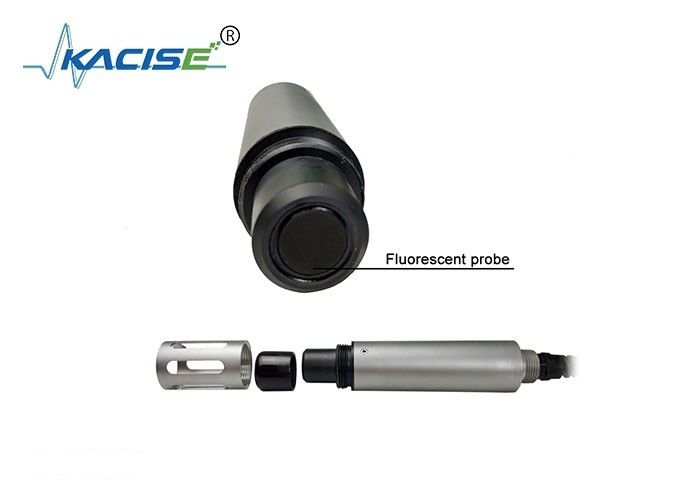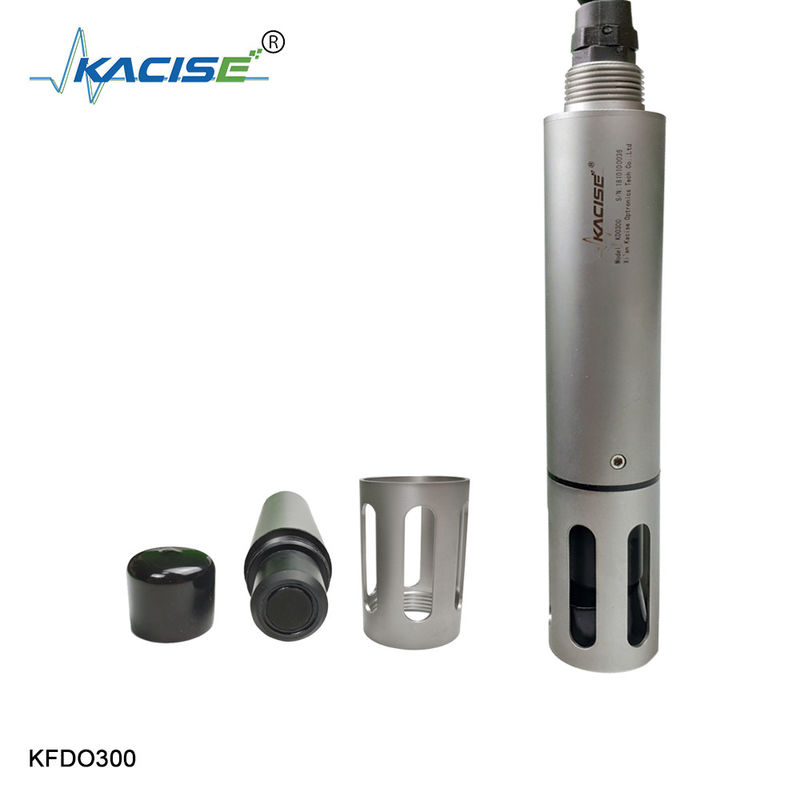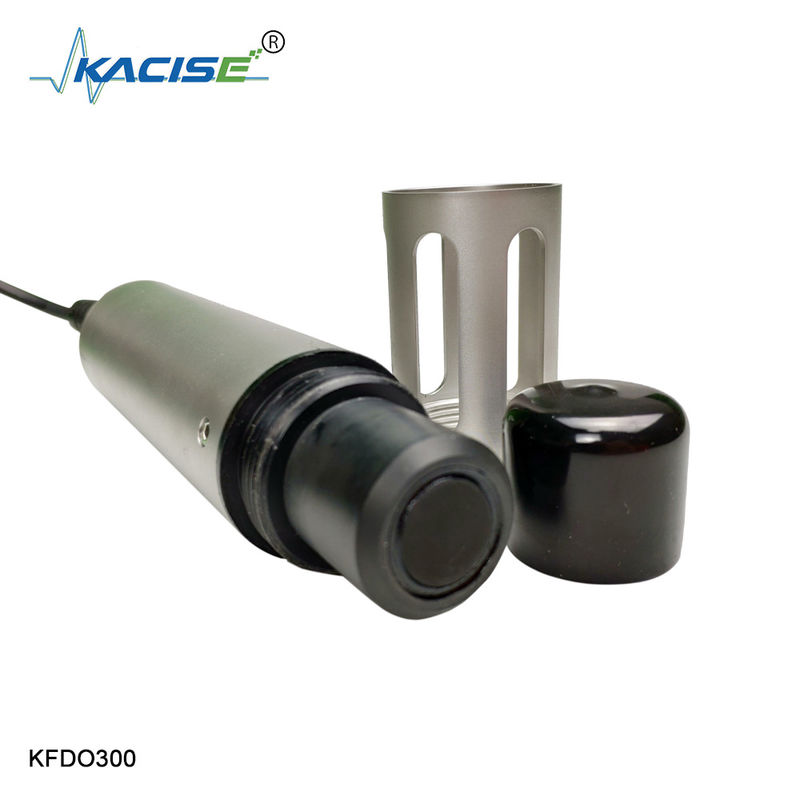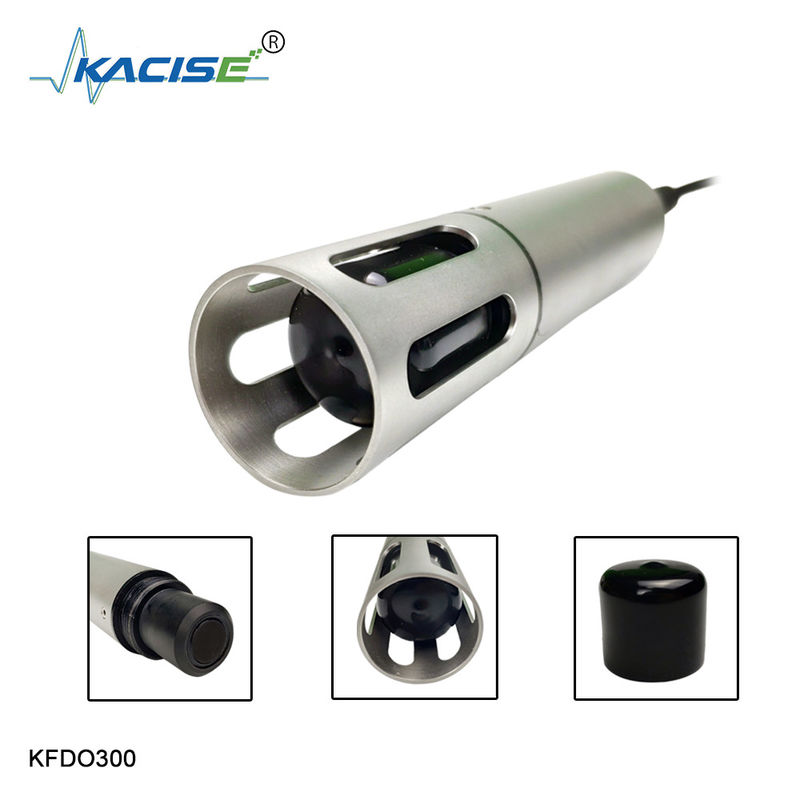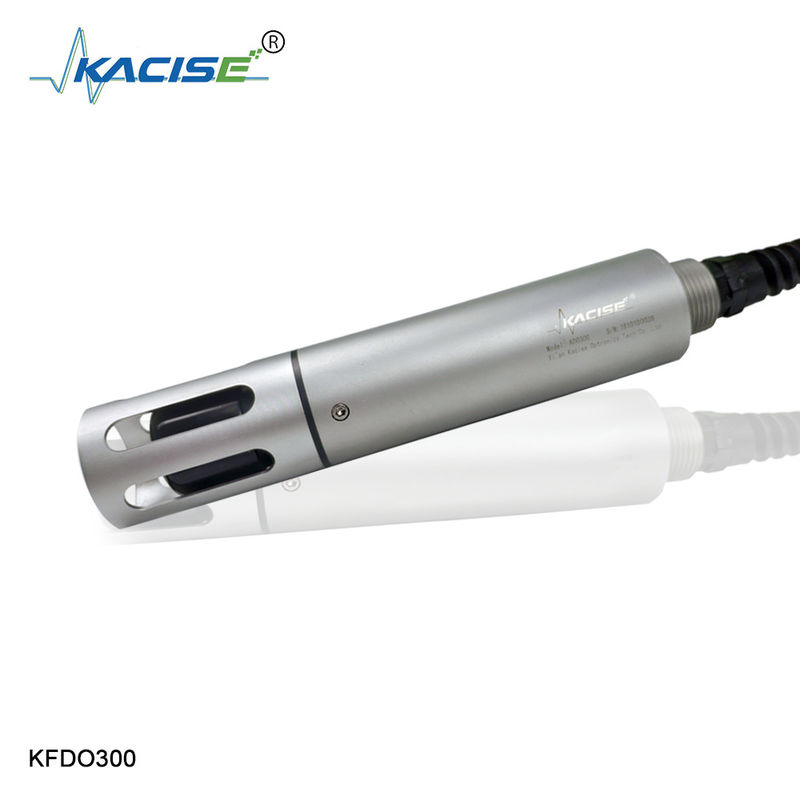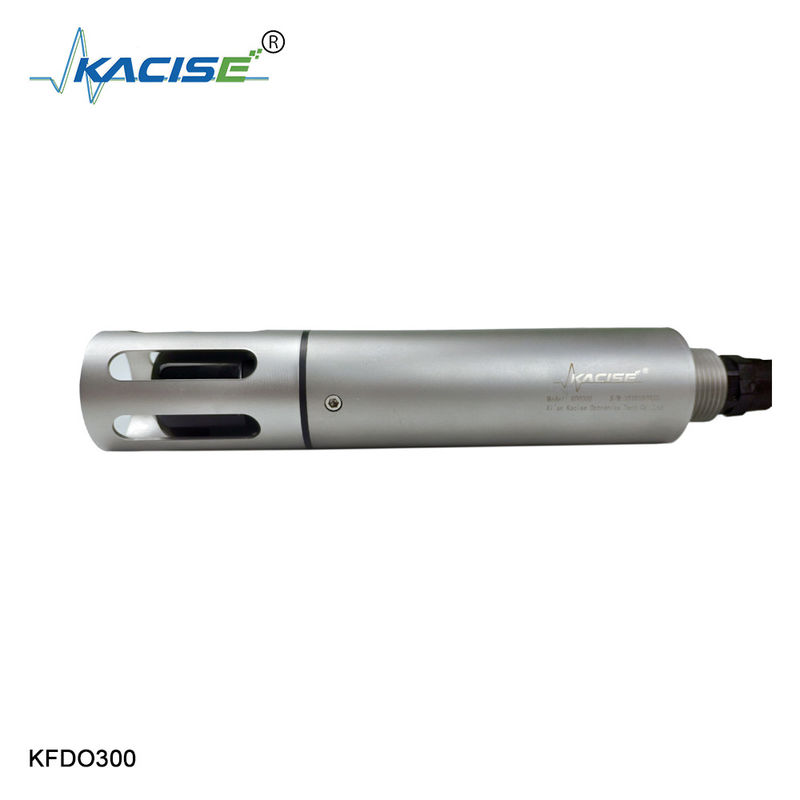KFDO300 Online Fluorescence Dissolved Oxygen Sensor Water Quality Sensor
Characteristics
Integrated design, anti-electromagnetic interference
Built-in temperature sensor, real-time temperature compensation Support salinity and air pressure compensation
Stainless steel case, IP68 waterproof grade, suitable for various working conditions
RS485 signal output, Standard Modbus protocol, easy integration, networking
| Water Quality Sensor Model |
KFDO300 |
| Water Quality Sensor Measurement parameter |
Dissolved oxygen, temperature |
| Water Quality Sensor Method of measurement |
Fluorescence quenching |
| Water Quality Sensor Measurement mode |
Immersion measurement |
| Water Quality Sensor Measuring range |
Do: (0 ~ 20) mg/L or (0 ~ 200)%
Temperature: (0 ~ 60) °C
|
| Water Quality Sensor Accuracy |
± 0.3 mg/L |
| Water Quality Sensor Repeatability |
± 0.3 mg/L |
| Water Quality Sensor Resolution |
0.01 mg/L |
| Water Quality Sensor Response time |
≤60s |
| Water Quality Sensor Zero Drift (24h) |
± 0.3 mg/L |
| Water Quality Sensor Range Drift (24h) |
± 0.3 mg/L |
| Water Quality Sensor Accuracy of temperature compensation |
± 0.3 mg/L |
| Water Quality Sensor Calibration period |
Six months |
| Water Quality Sensor Temperature range |
(0 ~ 60) °C |
| Water Quality Sensor Protection level |
IP68 |
| Water Quality Sensor MTBF |
≥1440h/Time |
| Water Quality Sensor Means of communication |
RS485(Modbus RTU) , maximum baud rate 115200 bps |
General Knowledge of Dissolved Oxygen
Tips:Polarographic Dissolved Oxygen Sensors
A polarographic DO sensor is an electrochemical sensor that consists of a silver anode and a noble metal (such as gold, platinum or infrequently, silver) cathode in a potassium chloride (KCl) solution. When the instrument is turned on, it requires a 5-60 minute warm-up period to polarize the electrodes before calibrating or measuring. The electrodes are polarized by a constant voltage (between 0.4 V and 1.2 V is required to reduce oxygen) from the cathode to the anode). As electrons travel in the opposite direction of a current, the anode becomes positively polarized and the cathode becomes negatively polarized. This polarization occurs as electrons travel from the anode to the cathode via an internal wire circuit. When oxygen diffuses across the membrane, the molecules are reduced at the cathode, increasing the electrical signal. The polarizing potential is held constant while the sensor detects changes in the current caused by the dissolved oxygen reduction. The more oxygen that passes the the membrane and is reduced, the greater the electrical current read by the polarographic DO sensor.
This is a two-part reaction – the oxidation of the silver anode and the reduction of the dissolved oxygen. These reactions occur as follows:

Ag – silver anode
KCl and H2O – potassium chloride solution
Au/Pt – gold or platinum cathode *inert electrode – does not participate*
Silver Anode Reaction and Oxidation
4Ag —-> 4Ag+ +4e–
4Ag+ 4KCl —-> 4AgCl + 4K+
Gold Cathode Reaction and Oxygen Reduction
*The Au/Pt cathode is inert and only passes electrons; it does not participate in the reaction*
O2 + 4e– + 2H2O —-> 4OH–
4OH– + 4K+ —-> 4KOH
Overall Reaction
O2 + 2H2O + 4KCl + 4Ag —-> 4AgCl + 4KOH
The gold/platinum cathode is left out of the reaction equation as it does not interfere with nor participate in the reaction. In a polarographic dissolved oxygen sensor, the role of the cathode is to accept and pass on electrons from the anode to the oxygen molecules. In order for oxygen to acquire the electrons, the oxygen reduction reaction must occur at the cathode’s surface. The electrons passed from the silver anode to the cathode via an internal circuit are used to reduce the oxygen molecules to hydroxide ions at the cathode’s surface, producing a current. This current is proportional to oxygen consumed, and thus to the partial pressure of oxygen in the sample.
The silver anode is oxidized during this process as it gives up its electrons to the reduction reaction, but the oxidation only occurs when measurements are being taken. This reaction is noticeable as the anode darkens (AgCl coating). As the oxidized coating accumulates, the sensor’s performance will degrade. This will be clear not only visually when looking at the electrode, but when using the dissolved oxygen sensor. Readings will be unusually low, will not stabilize, or the sensor will not calibrate. When this occurs, the electrodes can be cleaned to restore sensor performance. Electrode maintenance should be far less frequent than membrane replacement, which is based on application.
Phone +86-17719566736
Email sales@kacise.com
Location Tangyan South Road, High-tech Zone, Xi'an City, Shaanxi Province, China


 귀하의 메시지는 20-3,000 자 사이 여야합니다!
귀하의 메시지는 20-3,000 자 사이 여야합니다! 이메일을 확인하십시오!
이메일을 확인하십시오!  귀하의 메시지는 20-3,000 자 사이 여야합니다!
귀하의 메시지는 20-3,000 자 사이 여야합니다! 이메일을 확인하십시오!
이메일을 확인하십시오! 
